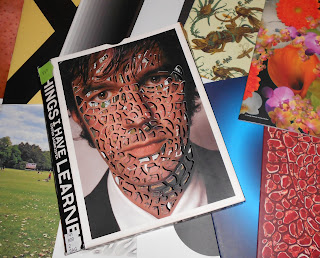
Masaccio - St Peter healing the sick with his shadow 1427-1428
One of the early paintings showing perspective. Usually the brick work would be a great indicator of the horizon line, however here the brickwork is uneven so it leaves no accurate clue. Took what I saw to be parallel lines to find the vanishing point and therefore the horizon line. This lead me to discover that the painter was about average height and stood up whilst painting as the other peoples eyes all sit just around the horizon line.
Giovanni Paolo Pannini- Gallery of Views of Ancient Rome 1758
This one was a really tricky one because the room is in such a mess barely anything is parallel! I did discover that perspective was used in the distancing between the picture separations at the back though (fencing technique).














